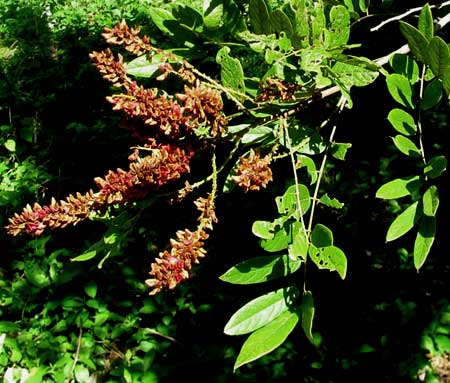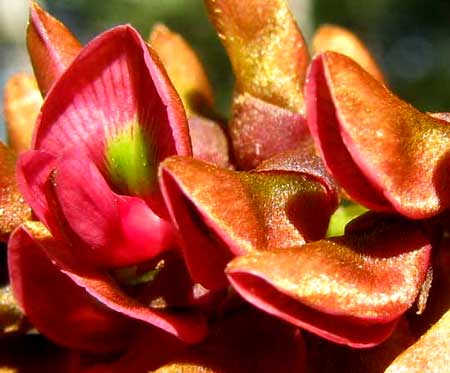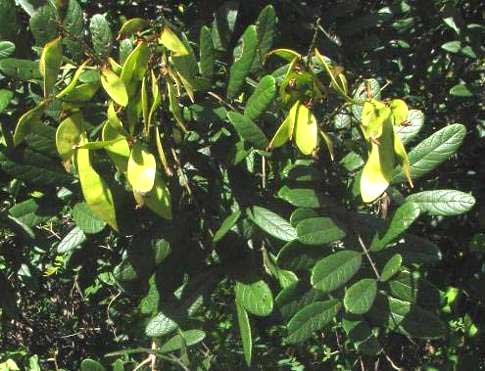
Balché is famous in the Yucatan because a drink concocted from its soaked bark, also called balché, is much used during Maya rituals. During ceremonies when a shaman pours a liquid in the four directions, usually he's pouring balché. Traditionally the balché drink was slightly fermented but what I've drunk didn't seem fermented at all. It was sweetened with honey and tasted of cinnamon and woodsmoke. Over the vast Maya domain different Balché species are used for the drink. That's one of them below.

At the beginning of the dry season, in mid-November, that's the northern Yucatan's main native Balché species, Lonchocarpus rugosus. A close-up of some of its flowers is shown below.

These are classic "papilionaceous" flowers typical of the Bean Family. Note the distinctive, rusty-colored hairiness on the backs of the top petals -- the "banners." By around Christmas Balché's abundant flowers carpet the ground like dry, brown confetti. The vast majority of flowers produce no fruits, which are legumes; usually only two or three legumes result on a flower spike. Below, you can see the tree's broad, thin fruits:

Books I've seen use the spelling "balché," with the accented e in the Spanish style. That means that the word must be pronounced with the emphasis on the last, accented syllable. However, the shamans I know emphasize the first syllable, pronouncing it "BAL-che."